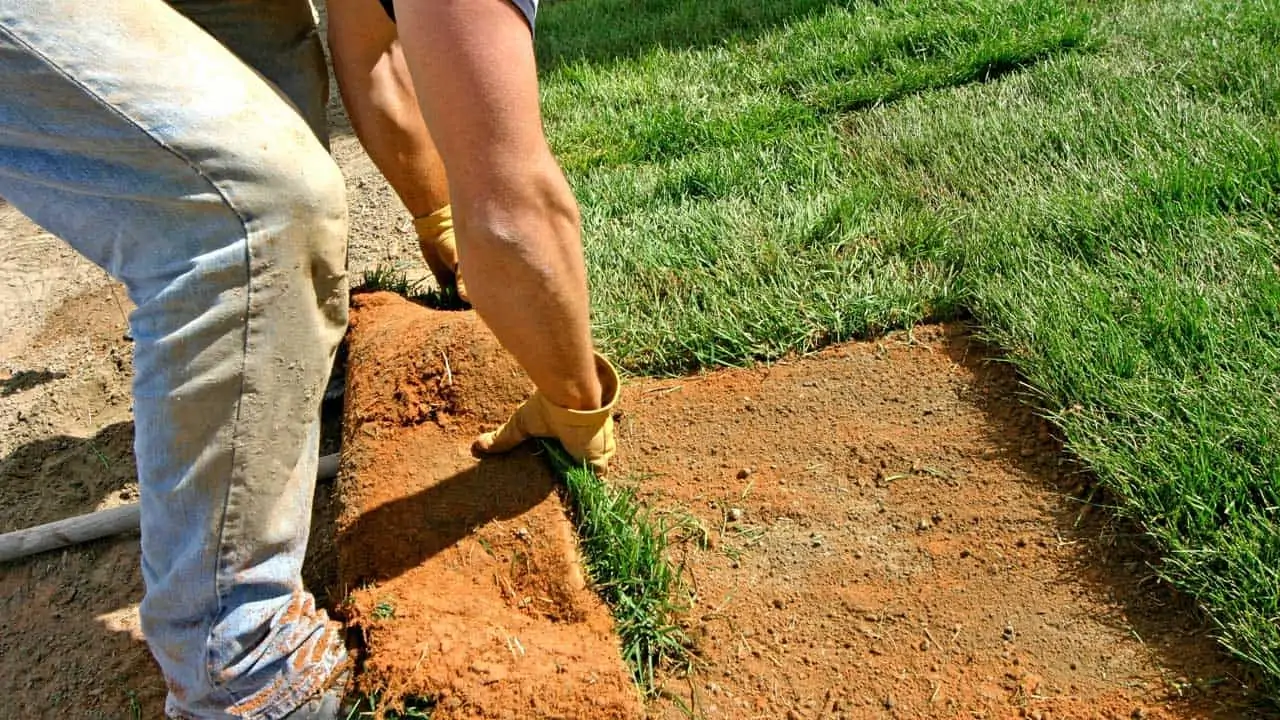“The beauty is in the blades, but the ‘action’ is in the roots,” is a good adage to remember when growing grass. Thus, the value of proper site preparation and soil improvement, before any planting takes place, is that it will be easier for the grass roots to penetrate deeply and evenly. Deep roots will make the lawn more drought resistant, a more efficient water and nutrient user and more dense as new grass plant shoots emerge. A dense lawn crowds out weeds and better resists insects and disease.
Follow these steps for a beautiful, healthy and trouble-free lawn:
- Clear the site of all building materials (wood, cement, bricks, etc.), as well as any buried stumps, rocks , stones or other debris that is larger than 4-5 cm (2-3 inches) in diameter.
- Rough grade the entire area to eliminate any drainage problems on the property. This would include sloping the grade away from building foundations, eliminating or reducing severe slopes and filling low-lying areas. A tractor-mounted blade and/or box are most often used for rough grading, but if the area is smaller, it can be done with hand tools. The rough grading will probably uncover more debris that should be removed and not buried.
- Initial tilling, to a depth of at least 5 cm (2 inches), should be completed prior to adding any topsoil or soil amendments. This will control most annual weeds, alleviate subsoil compaction and permit a bonding of the topsoil to the subsoil and improve root penetration and water movement.
- Add topsoil to achieve a total topsoil depth of 10-15 cm (4-6 inches), after firming. The topsoil should be a loamy sand, sandy loam, clay loam, loam, silt loam, sandy clay loam or other soil suitable for the area. To the extent possible, practical, affordable and available, incorporate humus (fully decomposed organic matter) into the topsoil.
- Test the soil pH with a chemical soil test to determine if any pH correction materials are required. Acidic soils (pH of 6 and below) can be improved with the addition of lime. The type (or source) and total amount of applied lime will be determined by the level of acidity and should be based on the recommendations of a reliable garden center or turf professional. Alkaline soils (pH of 7.5 and higher) can be improved with the addition of sulfur or gypsum. As with acidic soil correction materials, the type and total amount of materials will be determined by the level of alkalinity and should be based on professional recommendations.
- Apply “starter fertilizer” that is high in phosphate (P, or the middle number on a bag of fertilizer), at a rate recommended for the particular product. To prevent root injury to newly installed turfgrass sod, this fertilizer should be worked into the top 7 to 10 cm (3-4 inches).
- Finish grade the entire site, maintaining the rough grading contours and slopes, with a tractor-mounted box blade on large areas or heavy-duty rake on smaller sites.
- Roll the area with a lawn roller one third full of water to firm and settle the surface and reveal any low spots that should be filled to match the surrounding grade surface. If time permits, allow the area to settle further with rainfall or by applying irrigation water.
This site is now ready for turfgrass sod. With this degree of careful and thoughtful soil preparation, the resultant lawn will be absolutely beautiful and require less maintenance, smaller quantities of applied water, fertilizer and pesticides, as it maintains a high degree of density and uniformity and recovers much more rapidly from wear. For years to come, your investment in soil preparations will yield a high return.
-The Lawn Institute
